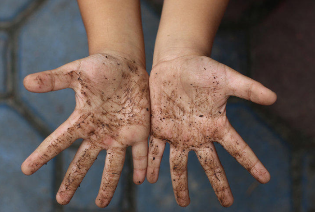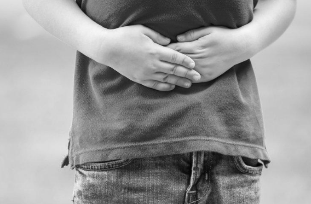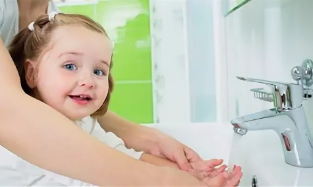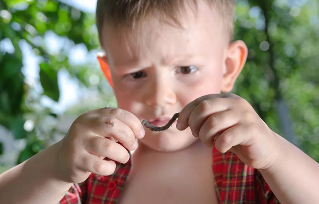Infestations in childhood is one of the most common and most misunderstood of the dangers of the disease. Helminths in children causes not only the lack of nutrients in the body, but they are also the cause of allergic reactions, chronic poisoning, reduced immunity, diseases, and damage to the organs of the gastrointestinal tract. The signs of parasitic infection are developed not at once, for a long time, the disease can be asymptomatic or with unexpressed clinic of the painting and rely solely on laboratory analysis.

The prevalence and types of helminths
It is considered that the intestinal parasitic infection of worms is the disease most apply to the people of the social strata below the middle, living in unsanitary conditions, often come in contact with infected animals or soil. However, according to statistics, only in the european countries of helminths were detected during the survey, one of every three patients.
In the nature there are over 300 species of helminths, more than 70 species common in russia, the rest can penetrate into the human body during travel to exotic countries. Among all the types of worm parasites, capable of existing in the human body, we distinguish three groups:
- nematodes, relative to the round helminths, one of the most common of the parasites (pinworm, vlasoglav, Trichinella, ascaride);
- the tapes flat worms, related cestode (different types of tapeworms, tapeworms and Echinococcus);
- parasites flukes or trematody, are the cause of opisthorchiasis, fascioliasis, funny, paragonimoz, etc
In most cases helminths are parasites and multiply in the departments of the intestine, however, the eggs and larvae can be shared with a blood flow of various organs of the body. Often suffer nearby organs digestive tract: the liver, the gallbladder, however, the parasites can inhabit muscle tissue, the lungs, the brain.

Helminth infection: routes of transmission of
Forms of transmission worms depend on the characteristics of their development cycle. For some groups of helminths, the human person is the "owner", in which they live and multiply, for others it is the intermediate link. In certain cases, the parasites due to the maturation of the eggs in the soil or other conditions. But the fundamental rule of protection from infection is hygiene, condition that in childhood is not always executed.
Childhood is the period when sustainable of the immunity has not yet formed, which significantly increases the probability of contracting parasites. The desire to try everything, the taste of multiple contacts with the soil, the sand, the articles increase the probability of the penetration of helminth eggs in the body of a child.
Most common helminth – ostritsy and ascaride – are transferred to the unwashed hands, they can remain in the everyday objects (the handles of the door), falling into the interior of the body with the food (poorly washed berries, greens, vegetables). There is also the possibility of the spread of helminths in contact with an infected person or animal or the existence of close with them.
Ostritsy – some helminths, which cause reinvasion: the itching that cause the females of earthworms in the process of laying eggs outside the anus, causes the sick to touch, to rub, to scratch the irritated surface and distribute the eggs of the parasites in underwear, bedding, clothing, objects on the surface. The re-ingestion of eggs that remain in the hands or in the bed, occurs reinvasion, the auto-infection of the patient. Primary infection of children when this occurs with greater frequency in institutions, in the sites in places of mass accumulation of the children.
What factors increase the risk of infection helminths?
- The lack of hand hygiene: failure to wash hands after returning from the street of the guests, the cup of the bathroom, before any food.
- The habit of biting nails, sucking fingers, hold in the mouth a variety of objects (pencils, pens, toys, etc).
- The presence of pets, attend to the street: even when timely anthelmintic treatment of dogs and cats can distribute the eggs of the worm, born in the back street, the of the wool.
- The breach of the rules of processing of vegetables, fruits, berries, vegetables before consumption.
- The low level of hygiene in the home: the use of street shoe, the delay in the washing of floors, etc

Worms, children, symptoms, and treatment of helminthiasis
The multitude of species of parasites for a long time do not contribute to the explicit formation of its clinical picture removed: the goal of the parasite – to exist in order to not be seen by the owner of a carrier. Therefore, bright symptoms helminths can be mentioned only in cases in which the multiple infection (initially, or due to the duration of the latent period) and/or the child has a compromised immune system, there are concomitant diseases, the fund of which helminthiasis manifests itself most unequivocally. Independent of the situation – the infection of exotic species of parasites that cause the blunt response of the organism.
The most common symptoms of helminth infection in children:
- increased appetite, without increasing the mass of the body;
- reinforcement of the saliva;
- the manifestation of dyspepsia intestinal, flatulence, unstable chair, nausea, discomfort in the stomach, the right hypochondrium, intestinal colic;
- dizziness, headache, fatigue;
- the tendency to allergic reactions, not noted above, or more acute manifestations of allergy;
- sensitivity, irritability, sleep disorders, attention, memory associated with the poisoning of the products of the vital activity of helminths;
- brittle, hair loss, the stratification of the nails, in the development of avitaminosis and deficiency of iron;
- frequent inflammatory processes in the nasopharynx (sinusitis, sinusitis, pharyngitis, etc), female genital mutilation, especially in girls, due to the anatomical proximity of the vagina and the anus.
In the long helmintiasisx the children will have a delay in the age of standards in the growth, weight, development, the violation of the activities and of the diseases of the organs of the gastrointestinal tract, the signs of the expressed intoxication, anemia, allergies, respiratory illnesses, bacterial and viral etiology, neurologic abnormalities.
The first symptoms generally show up after 2-4 weeks after exposure of the eggs of the worms in the body. These vary depending on the number of parasites, the level of protection of the forces and of the state of health of the child, as well as the species of helminths. So, ostritsy cause night itching in the area of the anus, which contributes to sleep. The toxocarosis features are cough, without signs of respiratory disease, fever state, probable attacks of suffocation, and allergic reactions.
The idea that the bruxism, the crunch of teeth in a dream – a sign of the presence of worms in the body, refuted by scientists-doctors. The phenomenon of bruxism is related to the nervous system of the person. In spite of helminths, especially ostritsy, can disrupt sleep and contribute to the neuroticism of the child, bruxism is not the confirmation of worm invasions. The treatment of this phenomenon will occupy neuroscientists and dentists.
In the long helmintiasisx all people develop the clinical picture of the intoxication of the organism.

The diagnosis of helminth infection
In most cases, the intestinal parasites in children are diagnosed by annual prevention surveys of the eggs of the worm. However, there is the more secure way: if you have the symptoms and negative analysis it is necessary to remember that not all species of helminths can be defined in the same way. The species that lay eggs, can also prevent the detection of laboratory studies, as well as the periodicity of playback may not coincide with the time of analysis. Also known cases in which the agency is located one or several individuals of the same sex, are not capable of reproduction, however, cause damage throughout the life cycle.
The negative of the analysis of cala, it is recommended to perform a study over 2-3 weeks. In the list of prevention research includes the analysis of the presence of worm eggs and the scraping of the enterobiasis. You may suspect the presence of helminths may also on the results of the analysis of blood: the levels of eosinophils in combination with low hemoglobin in the majority of cases means the presence of parasites in the body.
To clarify the diagnosis, may be applied to the biological studies of phlegm, bile, urine, coprogram of the masses fecal.
To clarify the diagnosis if it is suspected Echinococcus investigate the authorities of the peritoneum, ultrasound and/or x-ray method. Opisthorchiasis is diagnosed by analysis of the content of the intestines and duodenal reflection.
Specify the type of parasite and the damage it causes to the body help to immunological studies. After an accurate diagnosis, choosing the therapy method.
Process to methods of treatment of helminthiasis in children
Therapy with helmintiasisx is based on two pillars: the release of the parasites and detox the body, reduce or neutralize existing damage to the worms.
To reduce the severity of the signs of poisoning are assigned medications, vitamin (A, C), iron, vitamin-mineral complexes a solution of glucose, the course of the infusion gemodeza, etc, In some cases, shows the use of diuretics, antihistamines. The defeat of the muscles of the heart, the liver tissue can be applied hormonal of the tool.
As maintenance therapy is prescribed chelating agents, from the gastrointestinal tract of the products of the vital activity of parasites of the fermentation medications which contribute to the improvement of the processes of digestion and the functioning of the organs, etc
In any helmintiasisx very not recommended the use of drugs of broad-spectrum action, with action for children. The drugs that cause the death of the parasites that affect the human body, therefore, the selection of a medication and its dosage must be approached with caution.
Homemade and popular methods of getting rid of the worms categorically not recommended due to the lack of scientific basis and the possibility to accurately measure the dose and the possible influence on the organism of children.
The principles of therapy with helmintiasisx
In most cases, in the treatment of helminthiasis, a member of the family, the treatment must be all that living in this territory adults and children. This applies not only very contagious askaridoza, but also to other types of worm infections. Medicines for every member of the family also picks up the doctor depending on the age and state of health.
If in the house there are animals, they necessarily pass anthelmintic treatment, regardless of the time after the prevention.
In the interior, where the patient is a child, it is necessary to make daily hygiene cleaning, preferably at the time of trying to remove all carpets, stuffed animals, blankets. The bed linen and wearable bedding, towels, personal change with frequency (underpants – twice a day), after washing all clothing must be carefully ironed.

To monitor compliance with the rules of hygiene: wash hands after each visit to the bathroom, back to the street, use only personal towels, briefly to cut the nails. Without the compliance of the rules of the therapy can be ineffective due to the continuous availability of sources of infection in the environment of the patient.
The prevention of the infection of worms
The measures of prevention in the first place, take a good personal hygiene. Most often the eggs of the worm are transferred into the cavity of the mouth with the hands, and washing hands help to prevent the majority of cases.
Other preventive measures for the same are:
- careful (not less than 2-3 minutes under a jet of water from washing of fruits, vegetables, plate of vegetation before the meal, if it is assumed that the consumption of crude oil;
- the prolonged heat treatment of river fish (40-60 minutes) before you eat;
- punctual and proactive, anthelmintic therapy of the domestic animals;
- general cleaning in the house, in accordance with the hygienic sanitation.



































